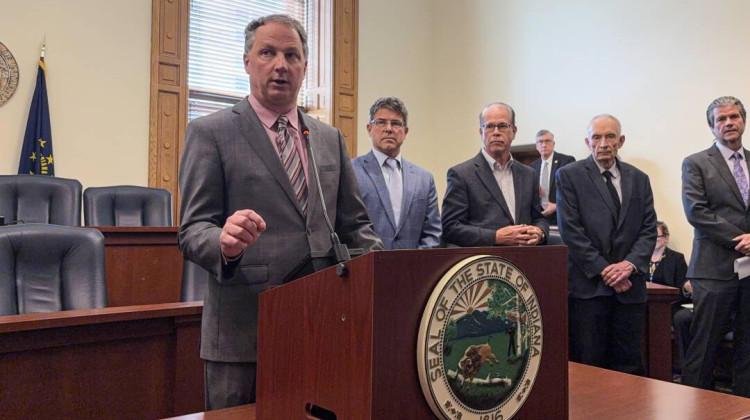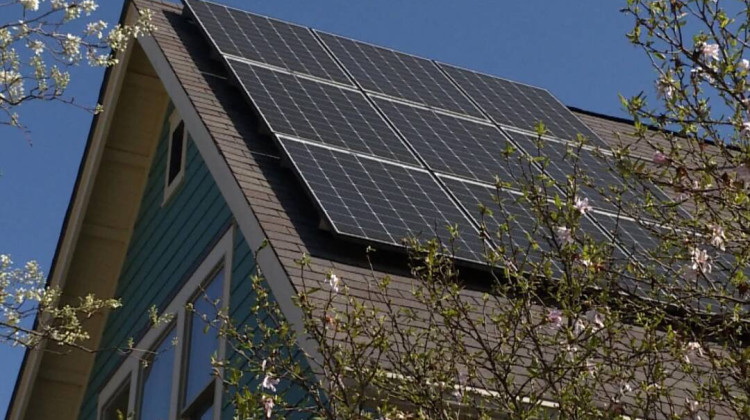
An estimated 1.1 million children up to age 13 lived in Indiana during 2020, 11% of which were potentially eligible for a subsidy. That’s equal to 126,719 Hoosier kids.
File Photo: WFYIAlthough Hoosiers’ access to federal child care subsidies was slightly higher than the national average in 2020, advocates are concerned that a majority of eligible Indiana families are still missing out, according to a new study.
The report was published June 27 by the Center for Law and Social Policy (CLASP), a Washington, D.C.-based nonprofit that advocates for anti-poverty policies.
The report examines data on eligibility for and access to Child Care and Development Fund (CCDF) subsidies during Fiscal Year 2020, which overlapped with the beginning of the COVID-19 pandemic.
During that time, the federal government provided additional funding and state flexibility for those funds to help increase child care access for essential workers and support child care businesses.
Since then, though, stagnant funding, inflation and the rising cost of child care has further decreased access to subsidies, according to CLASP. That means more families are struggling to find adequate care for their kids.
“Child care is essential. It supports family well-being and child development, improves family economic stability and mobility, and contributes to broader economic growth. Child care allows parents to go to work, school, job training, or meet other needs while children are cared for in nurturing environments where they can learn and grow. However, the high cost of child care can be a major barrier for many families, especially those with low incomes,” CLASP researchers said in the report. “All families deserve access to child care that fully meets their needs, but far too many cannot afford it, and only a small fraction of those children and families gain access to child care assistance through (federal subsidies).”
Funding gaps leave out Hoosier families
CCDF serves as the primary source of federal funding for states to help low-income families afford quality child care.
The program, structured as a block grant, provides each state with a fixed amount of federal funds each year and determines the number of families who can access a child care subsidy. The subsidy is used to reimburse or pay some or all the fees that child care providers charge families.
While the federal government provides a significant portion of CCDF funding, states must also contribute funds to receive the full amount of available federal dollars. As such, CLASP argued that CCDF “has never been funded at a sufficient level to serve all eligible children.”
CLASP estimates that 1.1 million children up to age 13 lived in Indiana during 2020, 11% of which were potentially eligible for a subsidy. That’s equal to 126,719 Hoosier kids.
But that year, CCDF subsidies reached only 24% of all potentially eligible Hoosier children — or 30,700 kids — based on state income eligibility, according to CLASP.
That’s higher than the national rate of 14%, but the report emphasized that Indiana eligibility and participation still “varied greatly” within each racial and ethnic group.
Asian and Hispanic/Latino children had the lowest rates based on state income eligibility.
Potential eligibility also varied greatly; Black, multiracial and Hispanic/Latino children had disproportionately higher rates of potential eligibility when compared to the overall population and the largest proportions of potentially eligible children, according to CLASP.
“Coupled with low overall access, this demonstrates a clear and immediate need for significant and sustained increases in federal funding to states, as well as policies that intentionally address compounding racial and economic inequities,” CLASP researchers said in the report. “Both are essential to addressing the historic underfunding, present inequities, and ongoing recovery from COVID-19 that have created rippling instability and exacerbated need.”
To qualify for CCDF in Indiana in 2020, a family’s gross monthly income before taxes and any other deductions could not exceed 125% of the federal poverty level. That income ceiling has since raised to 150% of the federal poverty level.
That’s significantly less than what’s allowed at the federal level. Under those requirements, a family’s income must not exceed 262% of the federal poverty level. Indiana’s previous and current income limits are among the strictest in the country.
According to CLASP, Indiana’s tighter income limits disqualify nearly 212,000 children from the child care subsidy program.
Similar trends across the country
Across the United States, 30% of all children aged 0-13 were potentially eligible to receive a CCDF subsidy in 2020 based on federal income eligibility, which is the maximum amount a family can earn and still receive assistance according to federal requirements. Of those children, only 10% accessed a subsidy, however.
Separately, about 20% of all children in the same age group were potentially eligible to receive a subsidy based on state income eligibility. Roughly 14% ultimately had access to a subsidy under those parameters.
In no state were more than 50% of potentially eligible children served, regardless of race or ethnicity.
Nationally, the CLASP analysis further found that:
- Eligible families’ access ranged from 3% in Montana to 16% in Pennsylvania based on federal income eligibility, regardless of race or ethnicity.
- Based on state income requirements, eligible families’ access ranged from 7% in Washington, D.C. to 27% in Alabama, regardless of race or ethnicity.
- Black children had the highest access rates, while Asian children had the lowest access rates, based on both federal and state income limits.
 DONATE
DONATE






 Support WFYI. We can't do it without you.
Support WFYI. We can't do it without you.